
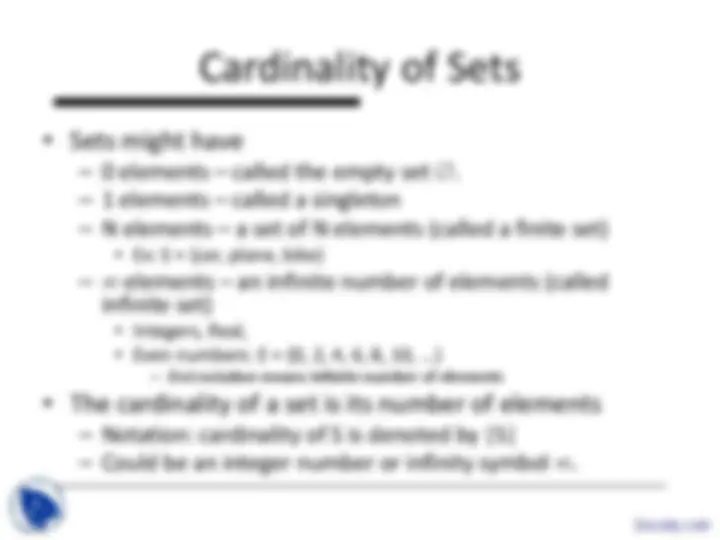
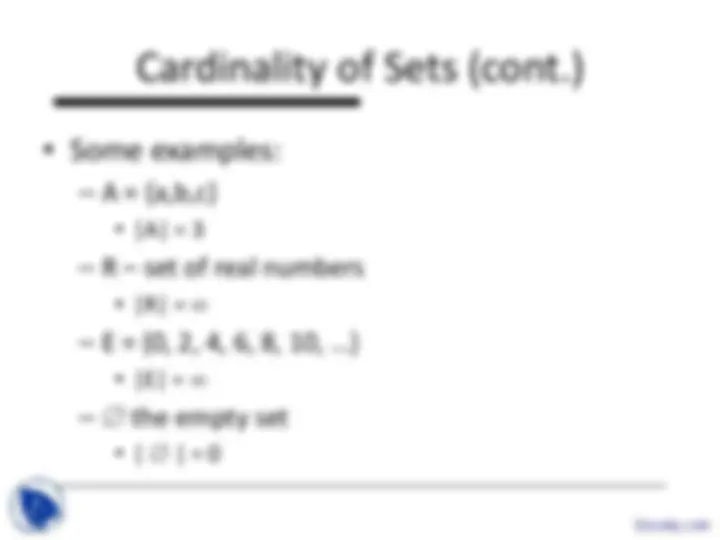
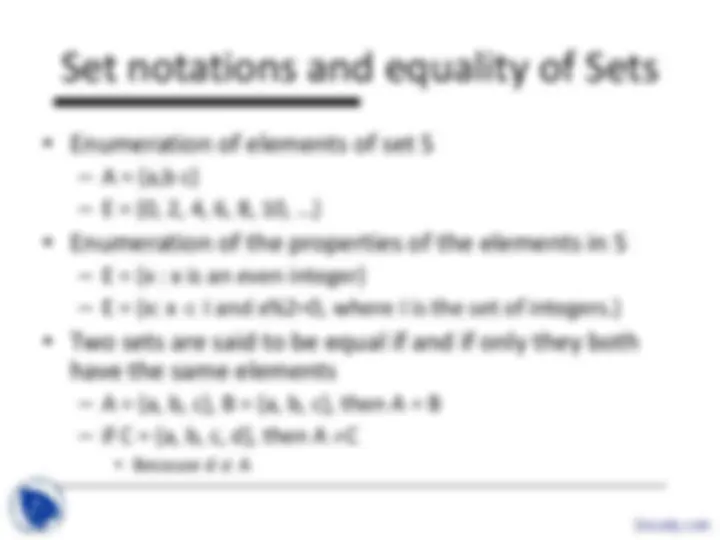
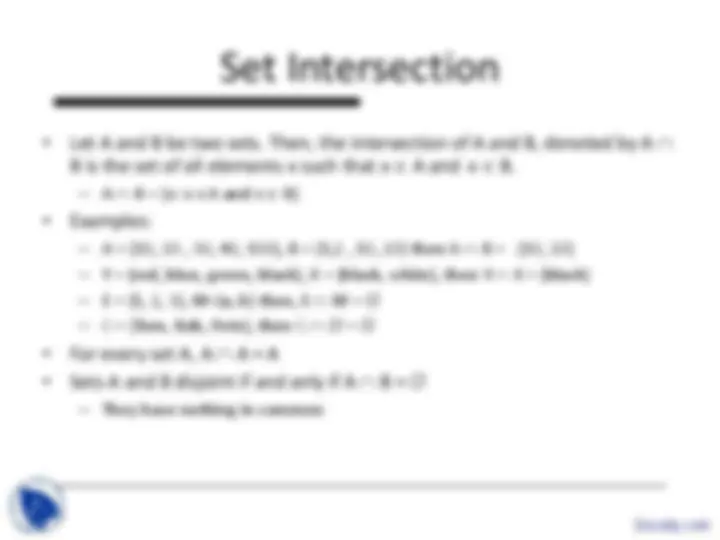
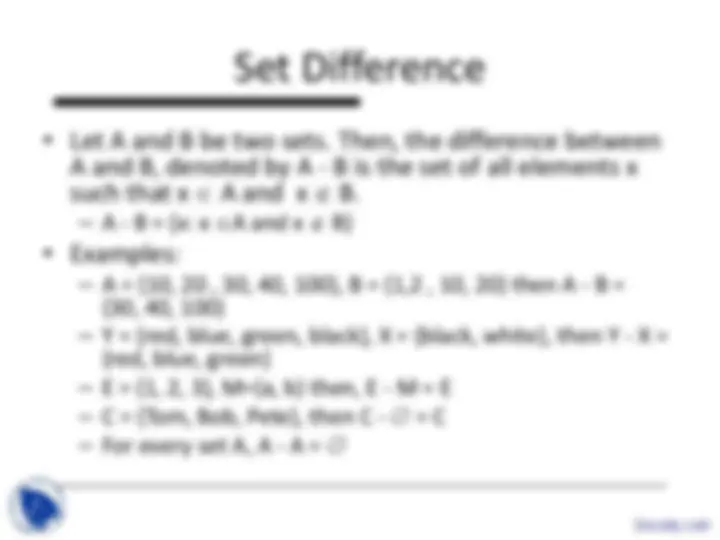
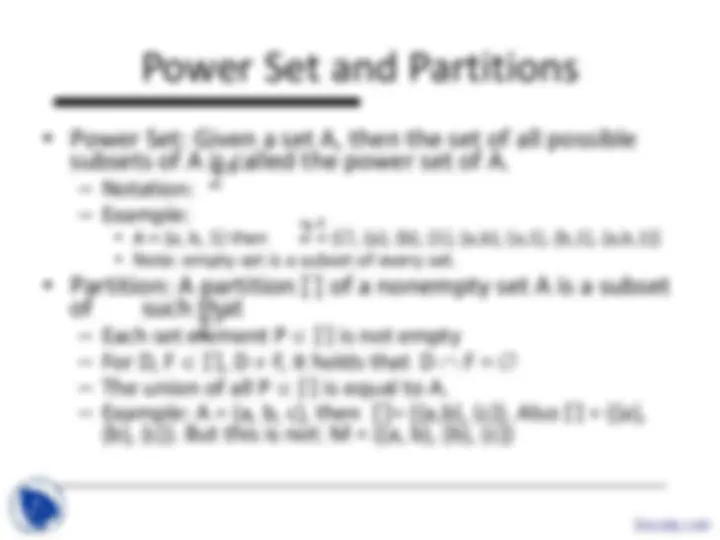
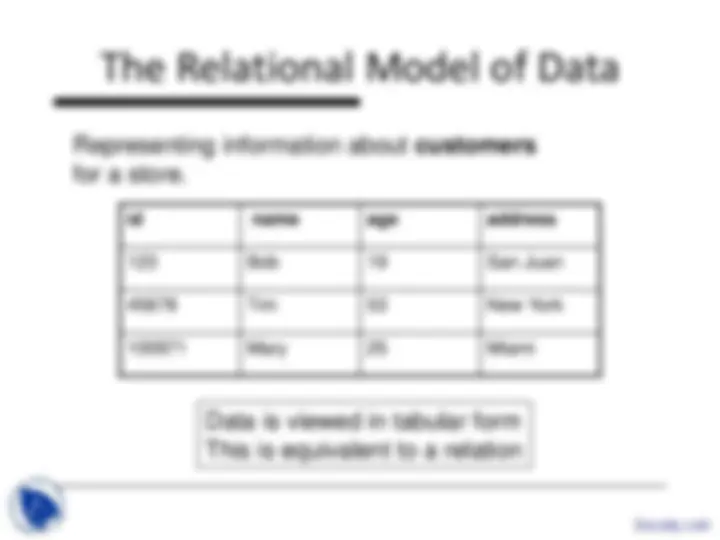
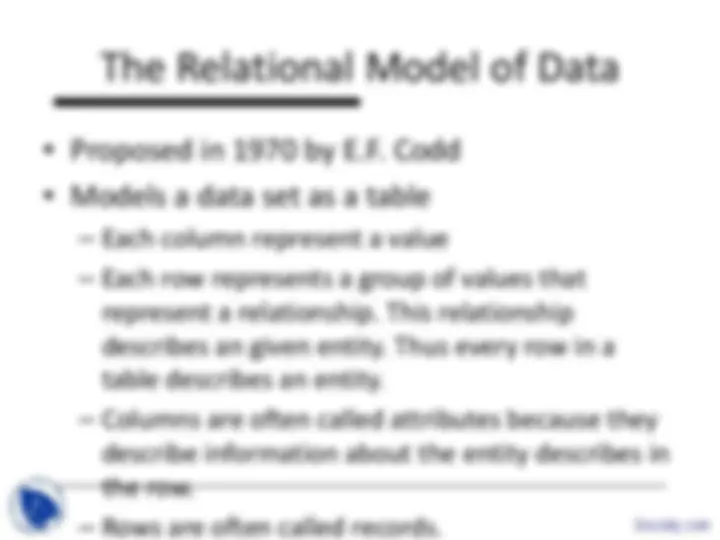
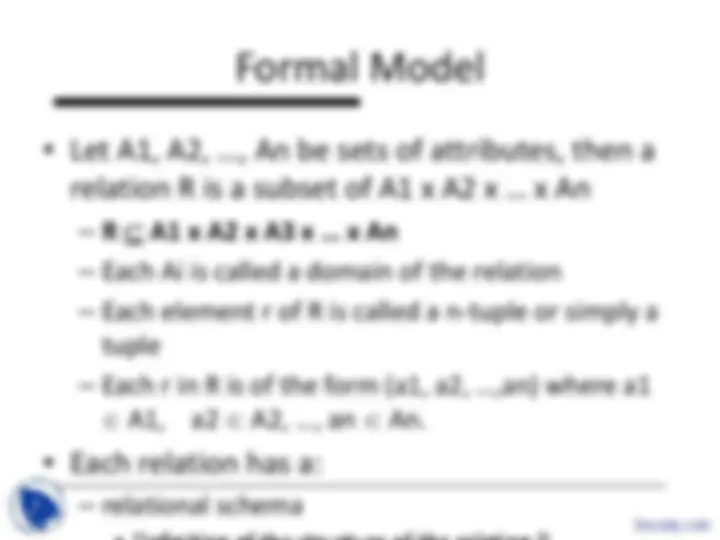
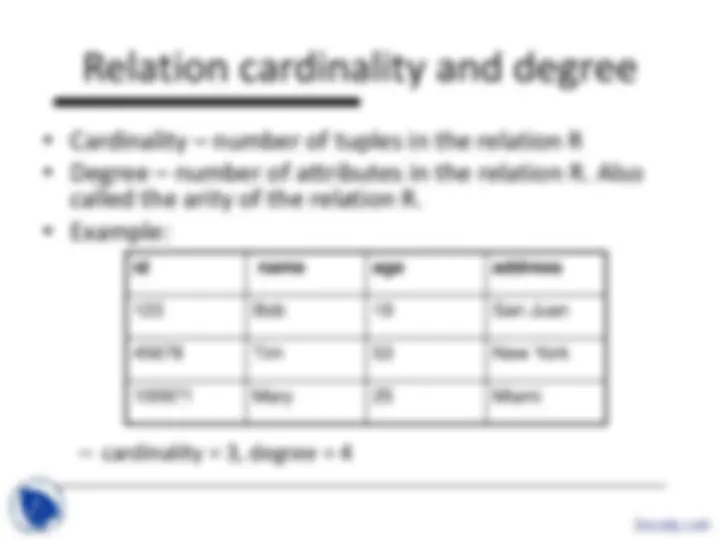
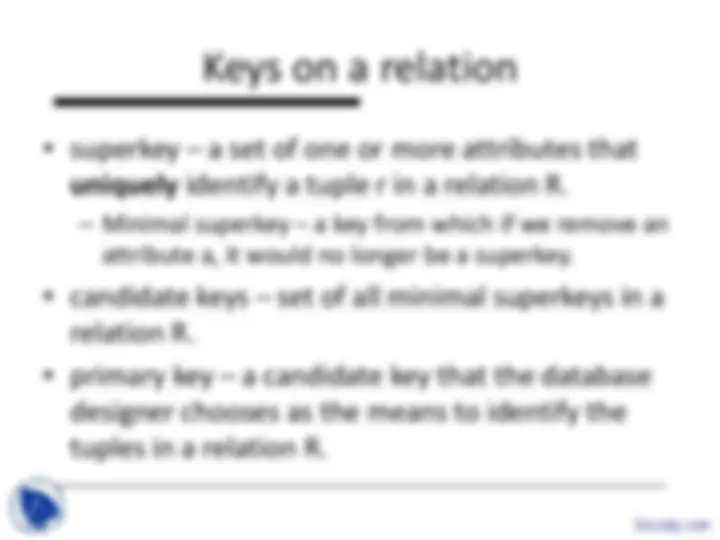



Study with the several resources on Docsity

Earn points by helping other students or get them with a premium plan


Prepare for your exams
Study with the several resources on Docsity

Earn points to download
Earn points by helping other students or get them with a premium plan
Community
Ask the community for help and clear up your study doubts
Discover the best universities in your country according to Docsity users
Free resources
Download our free guides on studying techniques, anxiety management strategies, and thesis advice from Docsity tutors
An introduction to sets and their cardinality, set notations and equality, sets and subsets, set union, set intersection, set difference, power sets and partitions, cartesian products and relations, and n-ary relations in the context of database management systems. It also covers the relational model of data and keys on a relation.
Typology: Slides
1 / 20

This page cannot be seen from the preview
Don't miss anything!













A 2 A 2 A 2
id name age address
123 Bob 19 San Juan
45678 Tim 53 New York
100971 Mary 25 Miami
Representing information about customers
for a store.
Data is viewed in tabular form This is equivalent to a relation
id name age address
123 Bob 19 San Juan
45678 Tim 53 New York
100971 Mary 25 Miami
id name age address
123 Bob 19 San Juan
45678 Tim 53 New York
1253 Joe 19 Los Angeles
37322 Bob 30 San Juan
100971 Mary 25 Miami